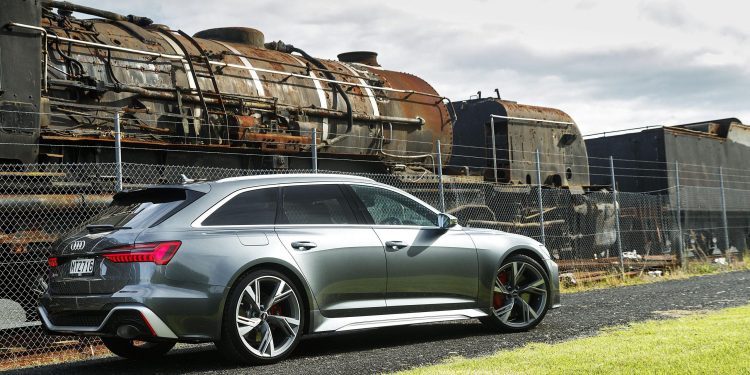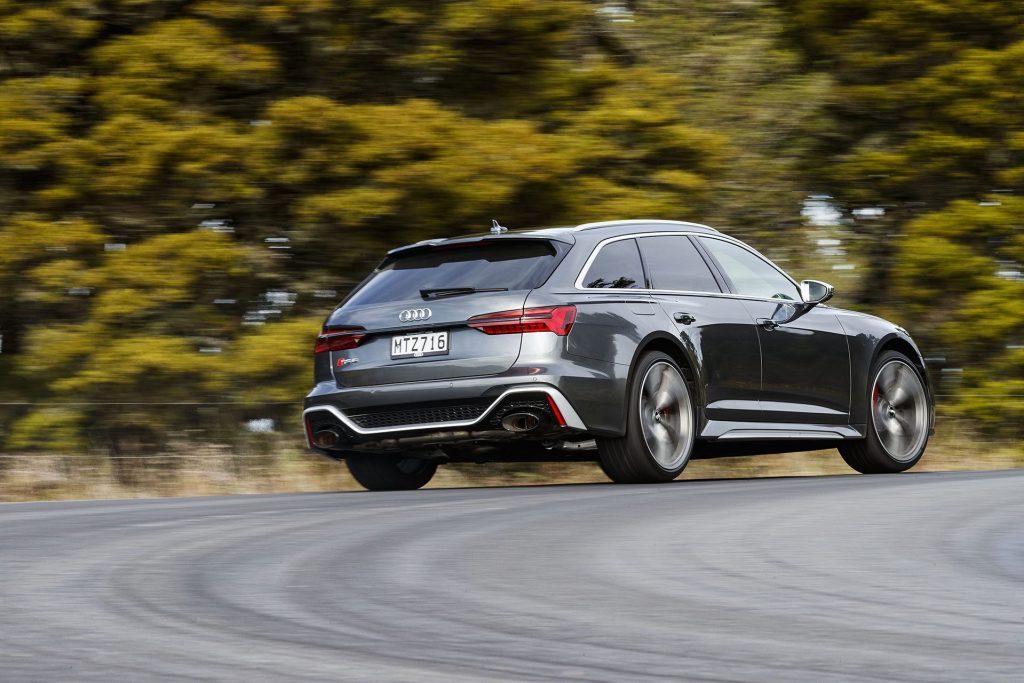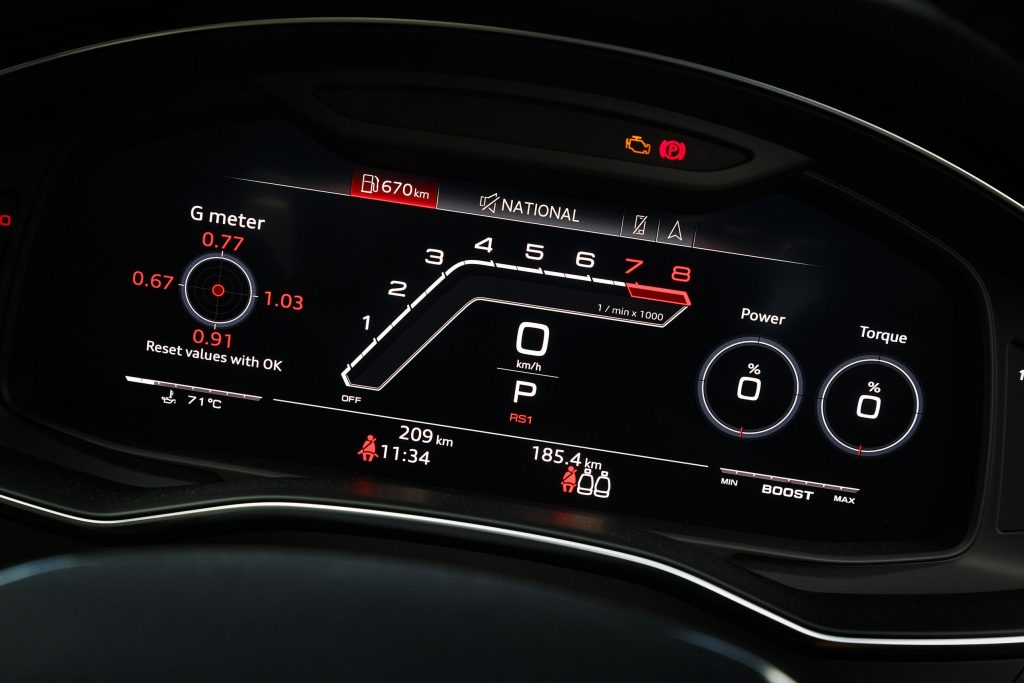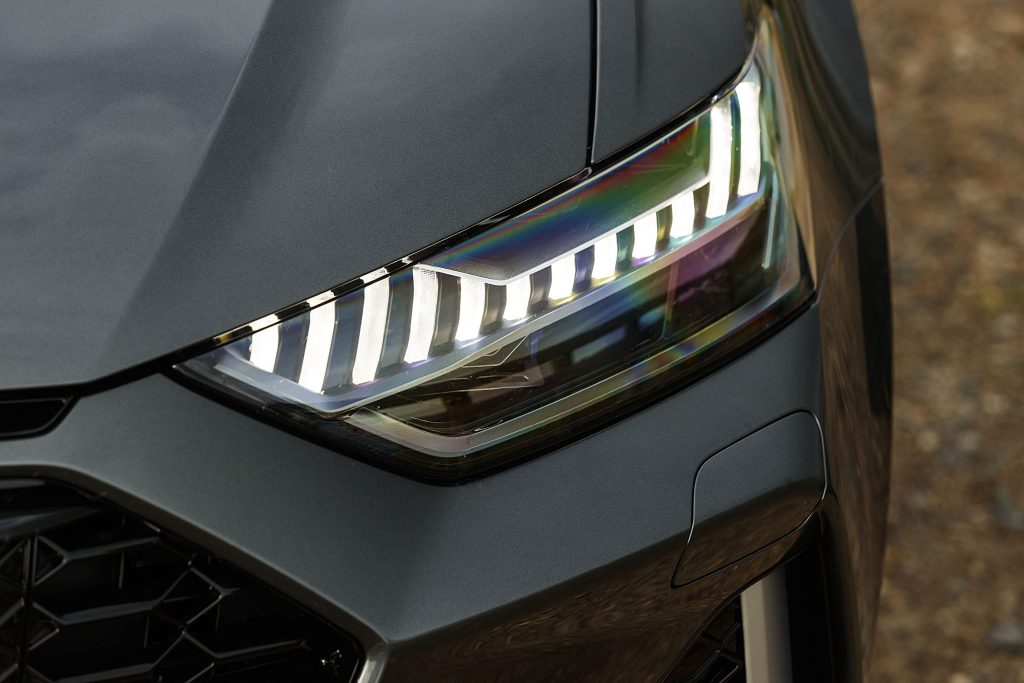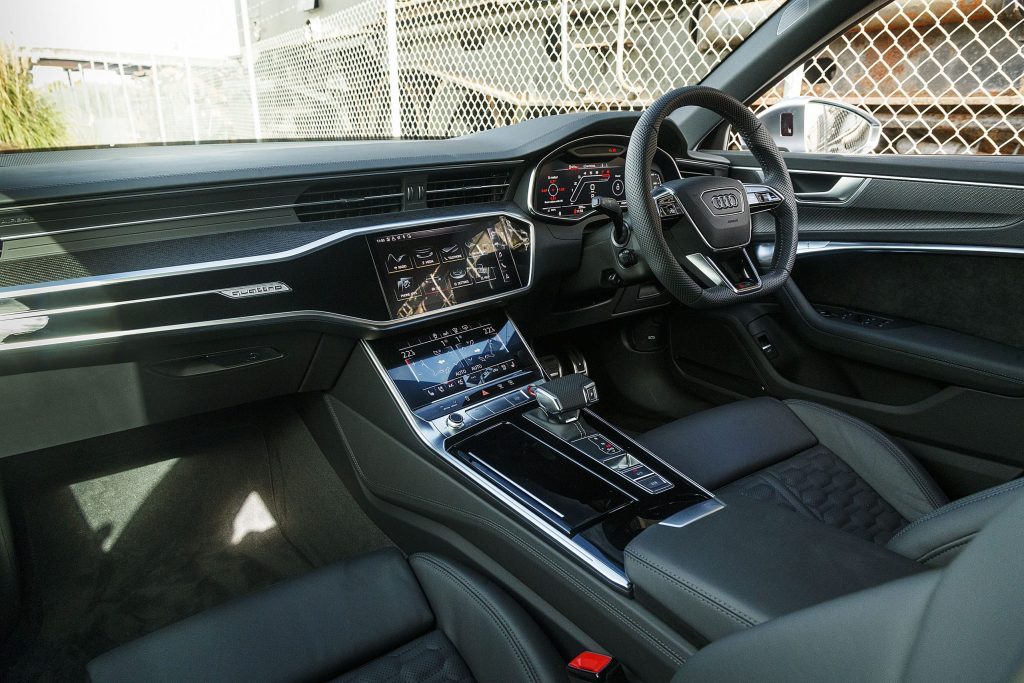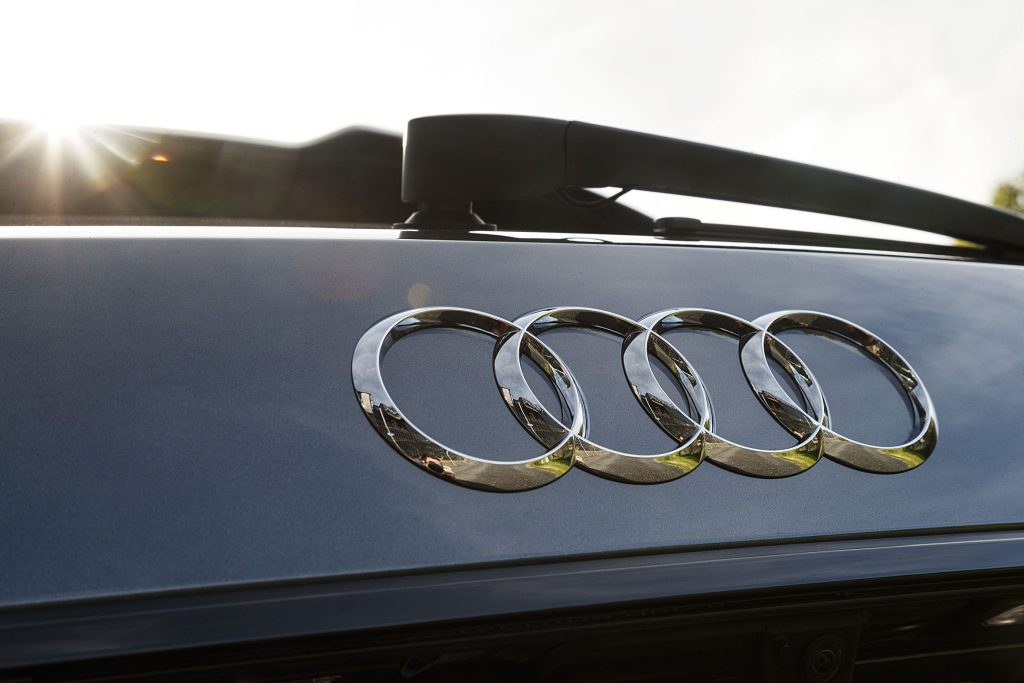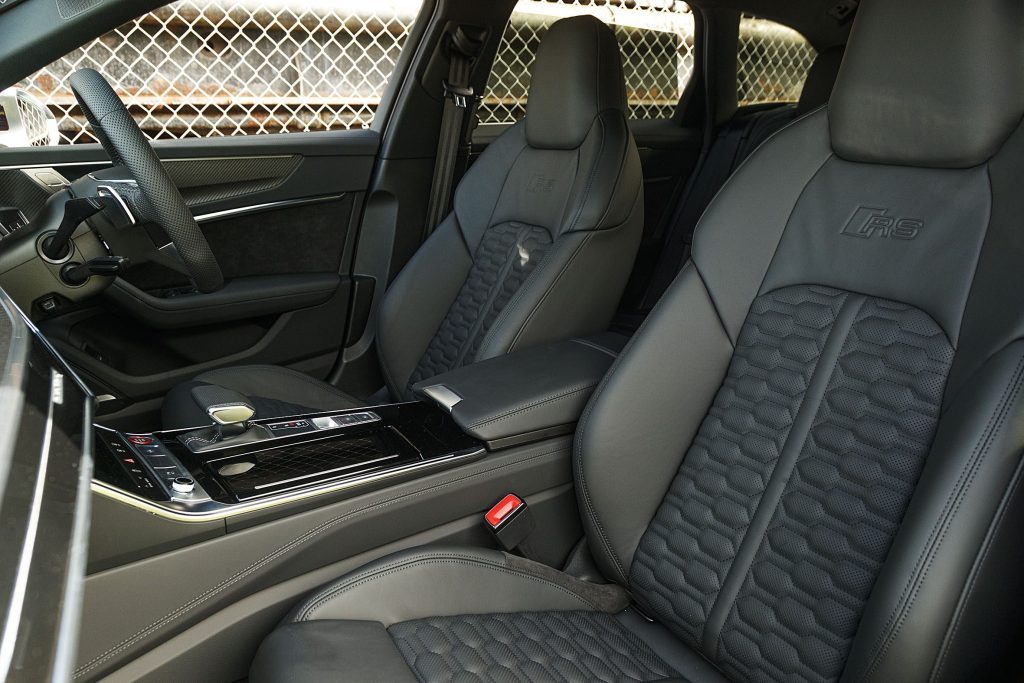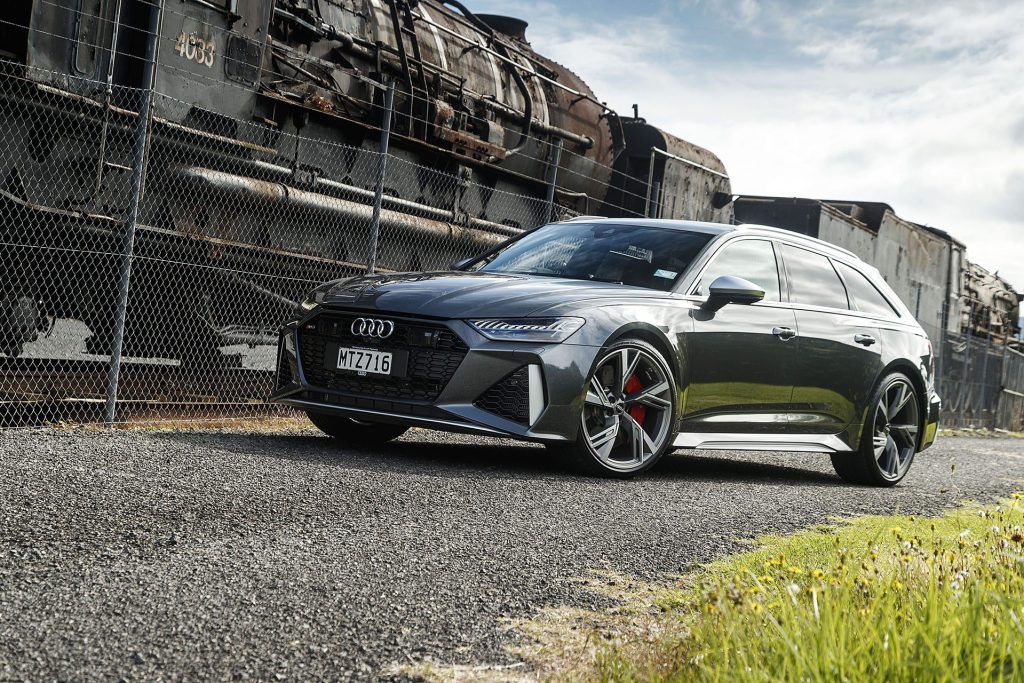2020 Audi RS 6 review
Words: Kyle Cassidy | Photos: Tom Gasnier
Audi’s latest RS 6 might be off the scale in terms of power, promises and price, but if ever there was a practical supercar, this is it. We delve into the wonders of Audi’s latest war wagon.
Audi’s RS 6 is based on the firm’s A6 model, which here starts at $155,900 in Avant form with a 250kW/500Nm V6. And a few years back that would have been considered plentiful, more than enough. Not now though, and in NZ, Audi A6 buyers want it all with few even considering the entry model, lured by the pull of the almighty RS 6. Not that there is much in common between the base Avant and the beast. The RS 6 shares only its front doors, roof and tailgate with the civilian version, while the guards are pumped 40mm each side to contain its engorged track.
For this new, fourth-generation model, the 4.0-litre V8 returns, revised with a view to a semblance of efficiency. There’s 441kW, which is slightly down on the previous Performance version, (guess they are saving something for the mid-life refresh then) but they’ve added a few more Newton metres, now with 800 on from 2050rpm to 4500. Additional too is a particulate filter for cleaner exhaust gases. The pair of twin scroll turbos are slightly larger and puff up to 1.4bar of boost pressure, a rise of 0.2bar. They live inside the V, reducing gas travel times to aid throttle response. The V8 is now coupled with a mild hybrid set-up featuring a belt alternator starter and a small lithium-ion battery. It adds extended engine-off periods, and it can hibernate the eight at speeds between 55 and 160km/h on a dead throttle. The effort is said to gain 0.8L/100km savings. There’s also cylinder deactivation. Audi is now claiming 11.7/100km on average for the RS 6, though mid-teens are still a more likely outcome from our experience. But what is quite amazing is the 24-month, 30,000km service interval for such a performance engine.
The eight-speed auto returns, as does the mechanical, self-locking centre diff, splitting drive 40:60 front to rear, though 85 per cent can be sent rear when the fronts start slipping. There’s brake-activated torque vectoring on both axles which, when cornering, slows the wheels on the inside of the curve causing the outsides to turn faster, pushing the car into the bend to help stave off understeer.
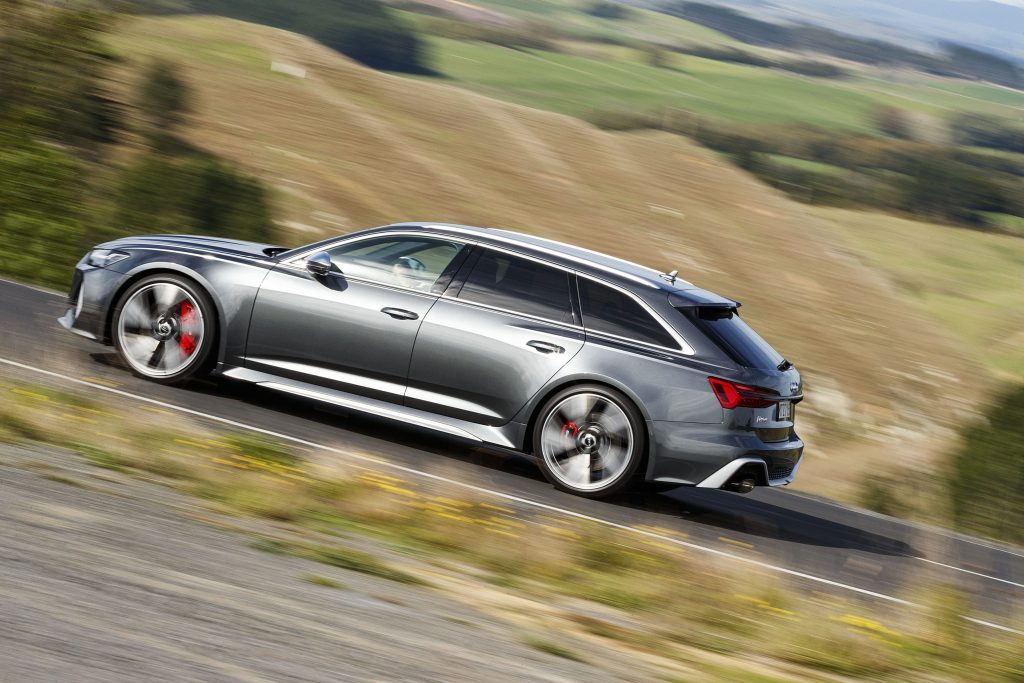
Plump for the Dynamic Plus package (an $11,000 option) and you get a rear sports diff with active torque split across the rear axle and dynamic rear steer to aid both turn in and stability, depending on the type of bend.
Air springs are standard on European spec cars but Audi NZ has decided to go with the steel sprung sports suspension, complete with Dynamic Ride Control. These adaptive dampers are hydraulically interconnected for the ultimate in analogue pitch and roll stabilisation, no tricky active roll bars here. Throw it into a bend and the damping forces ramp on one side to keep things on the level. The latest generation of Audi’s DRC system is said to be more compact, lighter and has a broader spread of damping force between the Comfort and Dynamic settings. Tasked with the stopping duties are a set of mammoth 420mm rotors up front with a crazy ten-pot caliper set up. Opting for the ceramic set shaves 34kg from the unsprung mass, but it costs $24k, or $25.5k if you want glossy red calipers (that’s some expensive paint).
The RS 6 is made mainly of hot formed steel with alloy used in places and the base mass is listed at 2075kg, though ours was closer to 2200kg, but then the RS 6 has always had a weight problem.
It’s also been quite subtle at conveying its intent, however this time around it’s more arresting, with larger vents screaming for air, and more chiseled lines to define the width of the pumped tracks, Audi using all the design tricks to make it appear low, wide and grounded.
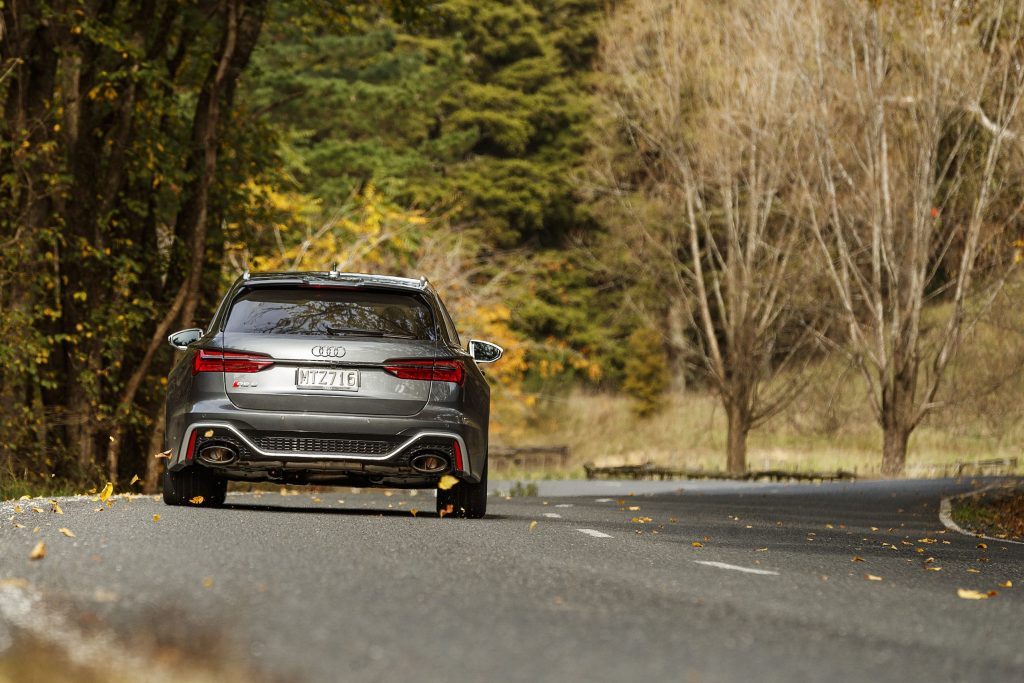
Current owners of the air-sprung car are probably wondering about the ride quality on the steel springs. Pleasingly, this actually does comfort. The low speed progress isn’t quite plush – an element of sport is ever present – but it’s never harsh. Some might miss the variable ride height of the air, as that front splitter is quite low. The gearbox in Comfort delivers just that, slurring the changes, and prefers to pull in-gear when more go is requested, using the low end torque to maximise the mooch. But full thrust is only a carpeted throttle pedal away, the trans kicks down and you’re into the full fat of the power. If you’re in a rush, the auto’s Sport mode will see you right, only a quick tug on the lever away.
The road noise is genuinely subdued, both around town and on the highway, the suspension quiet and refined when dealing to bumps. Its variable ratio steering is quick and easy between the stops and the turning circle is ok too. And the driveline doesn’t get grumpy during slow speed manoeuvres, no binding diffs or chattering tyres. The mild hybrid set-up kills the engine before you’ve come to a halt, and is quicker at restarting. It’s still a bit weird that the engine nods off when coasting at higher speeds, but it’s seamless in operation, as is the cylinder deactivation.
Not that you buy the RS 6 in search of lower fuel bills. It’s for speed and this duly delivers, 0-100km/h ticked off effortlessly in 3.5sec thanks to masses of power, ultimate grip and a quick shifting auto. The retardation is similarly epic, as is the all out stick. We managed to record over 1G in every direction on the G meter, which really should be banned given it promotes undesirable behaviour.
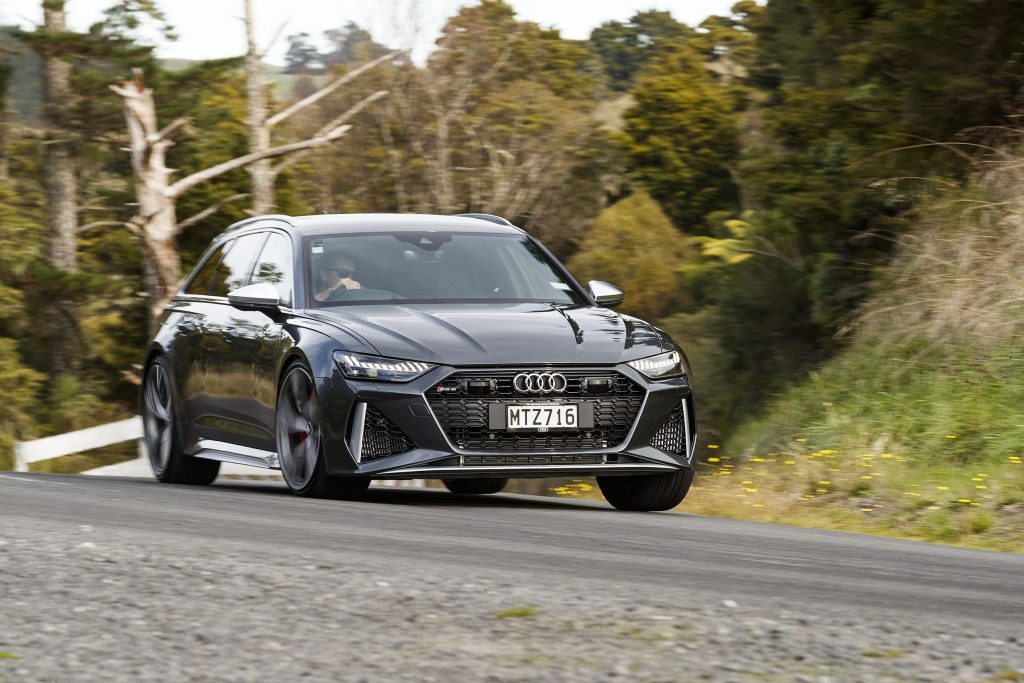
The RS 6 delivers a familiar drive experience, the quattro mantra is all out grip and stick and this is locked solid to the tarmac with all four wheels permanently deploying the steeds. The steering is nicely tuned, just enough weight in its sportiest Dynamic setting to point the RS 6 towards its destiny, with enough tactility to tell when you need to ease up. With the RS 6, you only need worry about keeping the front end tidy. Because of the immense grip and forward thrust (not to mention the 2200 kilos of frontal-biased mass), it can start to push wide of the optimal cornering line, especially in tight corners, but it’s easily managed with less throttle enthusiasm or a minor adjustment of the steering. It’s best to run in the RS2 drive mode where you can configure the ESP to Sport, lessening its interventions. And because of that gargantuan grip, you can boost it hard off the bend, the rear end stable, no power lost to unwanted tyre rotation.
The suspension in its full Dynamic mode is a little edgy at speed and best left for smooth roads or the track. The Balanced setting we found brought the control without the bones to better take the dips and bumps of your fave back road.
The V8 goes feral from 3000 to not quite seven, the auto shifting sublimely up near the limit. It’s snappy on the downshifts too, delivering the gear best suited for the job every time. And the sound? Enough burble and brawn without being overbearing. Rounding out a strong performance, the brakes are solid with an early bite point, and you can lean on them without upsetting the balance of the car.
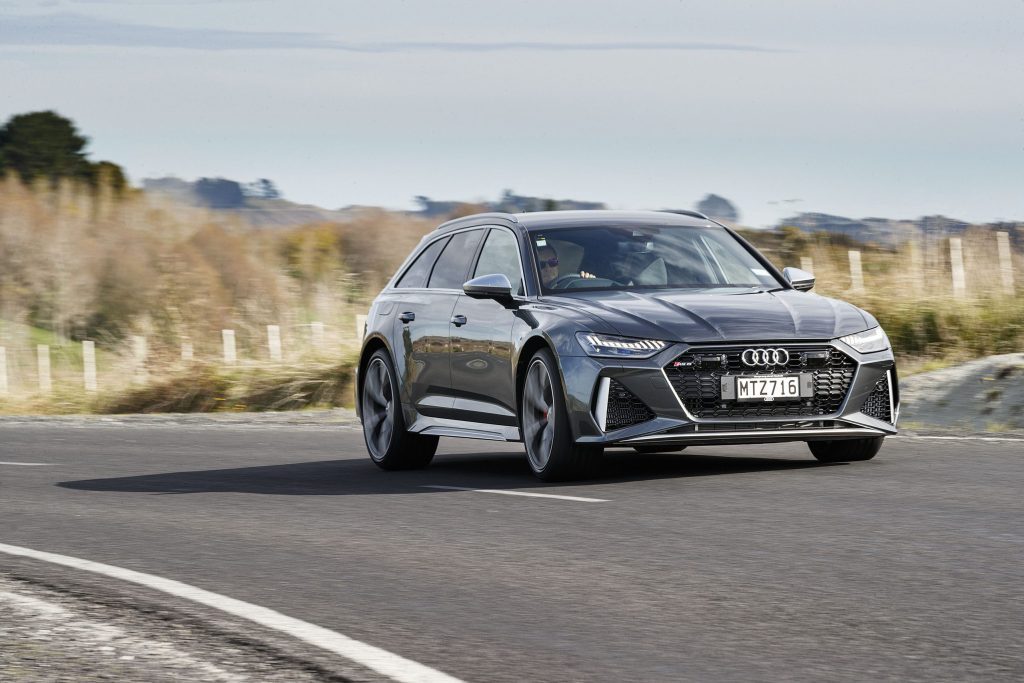
The RS 6 is more or less the same size as it was last time, with a marginally larger hold at 565L. The load area is a tad narrow between the arches at just over 1m, while sinking the seat liberates a claimed 1680L. In the rear there’s not masses of leg room, just enough, the seats with a sporty profile, if a little upright. Those upfront strike a happy balance between sport and support, they hold you in place without bruising amounts of bolstering. There’s good adjustability, and you’ll suffer no back ache after a few hours at the helm.
There’s no lack of info at your fingertips with configurable main dials, complete with an RS set-up (strip tacho with a light show as you reach the limit), a head-up display and the dash is dominated with Audi’s twin MMI touch screens. This we find easier to fathom than the old system though the ‘buttons’ require a decent prod rather than just a tap but it’s all pretty straightforward. As safety research has found, touchscreens can be distracting on the go, and as there’s lots to digest here, it’s best to familiarise yourself with it first rather than learning on the go.
The RS 6 is equipped with all of Audi’s safety minders however to keep an eye out when you’re not. Pleasingly, the lane keeping function is easily defeated and the active cruise is set without fuss despite its old-fashioned wand controller.
The ventilation is noisy if the rear system is active, the doors need a decent slam to shut and cabin storage is scant. Its wing mirrors aren’t overly generous, though there is a blind spot alert. The parking camera has good resolution and there’s a surround view that’s just large enough to be useful.
The RS 6 manages to strike that balance of everyday refinement and comfort with the ability to teleport four (and their skis) across country at warp speed. Heck, its abilities almost justify its $219k sticker price.
| Model | Audi RS 6 | Price | $218,000 |
| Engine | 3996cc, V8, 441kW/800Nm | Drivetrain | 8-speed auto/AWD |
| Fuel Use | 11.7L/100km | C02 Output | 268g/km |
| 0-100km/h | 3.53 sec | Weight | 2218kg |


